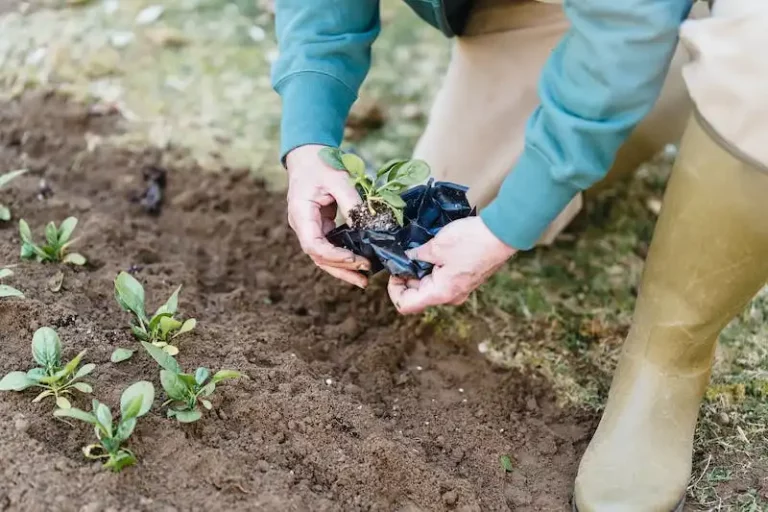Tomatoes, although always a popular backyard crop, have faced a decline in flavor-associated factors in recent decades. Most tomatoes found in supermarkets today have a bland taste, lacking the full-flavored glory that they once possessed. That’s because the taste of a tomato is influenced by a complex chemistry, including the concentration of sugars, volatile compounds, and aroma. Unfortunately, these flavor-enhancing compounds have been mostly bred out of modern commercial tomatoes in favor of traits like long shelf life, disease resistance, and uniform appearance.
In the quest to return tomatoes to their full-flavored glory, scientists and tomato enthusiasts have turned to the study of heirloom varieties. These tomatoes, which were commonly grown before the advent of modern hybrid varieties, often have a more diverse and complex flavor profile. They are loaded with sugars, acids, and volatile compounds that give them a rich, tangy taste. Many tomato lovers have described the flavor of these heirlooms as the winner in taste tests, saying they are just as good or even better than the hybrid tomatoes that dominate the market today.
One of the secrets to achieving full-flavored tomatoes lies in the soil where they grow. Tomatoes thrive in well-drained soil that is rich in organic matter. A good balance of nutrients, including nitrogen, phosphorus, and potassium, is also crucial for optimal flavor development. Farmers and gardeners can adjust the soil conditions to enhance flavor by supplementing with natural fertilizers, compost, and other amendments. Additionally, the use of bi-color varieties, such as bicolor cherry tomatoes, can contribute to a tastier tomato with complex flavors.
Another key aspect in the quest for full-flavored tomatoes is the timing of harvest. Tomatoes should be left to ripen fully on the vine, as this allows for the development of sugars and other flavor-enhancing compounds. Harvesting tomatoes too early can result in a blander taste, whereas ripe tomatoes have a higher concentration of sugars and a more pronounced aroma.
If you want to taste the full glory of a tomato, the best option might be to grow your own. By planting heirloom varieties, using rich and well-balanced soil, and allowing the tomatoes to fully ripen, you can experience the natural and full-flavored taste that has been missing from the mass-produced tomatoes of today. So, whether you’re a backyard gardener or an aspiring tomato connoisseur, the quest to return tomatoes to their full-flavored glory starts with understanding the science behind them and taking the necessary steps to cultivate the tastiest tomatoes.
In summary, the quest to return tomatoes to their full-flavored glory requires a return to heirloom varieties, optimized soil conditions, and proper harvesting techniques. By understanding the chemistry behind tomato flavor and taking advantage of the natural compounds that contribute to taste, it is possible to grow tomatoes with the full, rich flavor that we crave. So, let’s dig into the science of tomatoes and get back to enjoying tomatoes that taste like they were meant to!
Taste of Tomato
In the quest to return tomatoes to their full-flavored glory, scientists are delving into the flavor-associated compounds that make tomatoes taste so delicious. With modern cultivation practices focusing on factors like yield and disease resistance, tomatoes have lost some of their taste over time. But farmers and researchers are determined to find ways to bring back the flavorful tomato that many people remember from their childhoods.
Tomatoes, like other fruits, get their flavor from a combination of sugars, acids, and volatile compounds. That’s where the taste and aroma come from. When tomatoes are picked green and shipped long distances, they often lack the concentration of these flavor compounds that give them their full taste.
So, how can we return tomatoes to their full-flavored glory? One important factor is the soil in which the tomatoes are grown. Healthy-looking tomatoes may not have the same flavor profile as the ones grown in nutrient-rich soil. By focusing on the right balance of nutrients in the soil, farmers can help to enhance the flavor of the tomatoes.
Another key aspect is the variety of tomato being grown. Some tomato varieties naturally have a higher sugar content, which contributes to a sweeter taste. Farmers can choose to grow these varieties to ensure a full-flavored tomato.
Tomatoes that ripen on the vine also tend to have a better taste than those picked green and ripened artificially. The longer the tomato stays on the vine, the more time it has to develop its flavor. This is why many backyard gardeners prefer to grow their own tomatoes, as they have control over when and how they harvest them.
Growing conditions and ripening methods are not the only factors that affect the taste of tomatoes. Subtle differences in genetics can also play a role. Researchers have found that heirloom tomatoes, which are older, less uniform varieties, tend to have a more complex and full-flavored taste. In contrast, the varieties grown by large-scale commercial farms are often bred for uniformity and long shelf life, which can result in blander tasting tomatoes.
In summary, there is a lot more to the taste of tomatoes than meets the eye. The quest to bring back the full-flavored tomato requires a combination of factors, from soil health to ripening methods to the genetic makeup of the tomato plant. By understanding the chemistry behind flavor and focusing on these key elements, we can hopefully return tomatoes to their former glory and enjoy their delicious taste once again.
The Quest to Return Tomatoes to Their Full-Flavored Glory
In the quest to bring back the full-flavored glory of tomatoes, scientists have turned to the world of bicolor varieties. Bicolor tomatoes have been found to have more sugars and flavor compounds compared to their mostly red counterparts. The challenge is to find a way to increase the concentration of these compounds in tomatoes, without sacrificing their healthy-looking appearance.
For a long time, tomatoes were bred for traits such as disease resistance and longer shelf life, but the result was a drop in flavor. To return tomatoes to their full-flavored glory, scientists have focused on improving the taste and aroma of these fruits. One researcher told us, “We want to bring back that rich, sweet taste that tomatoes used to have. The goal is to create tomatoes that taste as good as they look.”
Through a combination of genetics and careful breeding, scientists have been able to increase the sugar content and overall flavor of tomatoes. By understanding the chemistry behind tomato flavor, they’ve discovered that the natural taste compounds are concentrated in the pulp and skin of the fruit. To enhance the flavor, scientists are developing ways to increase the concentration of these compounds through targeted breeding.
But it’s not just the sugar content that determines the flavor of a tomato. The variety of the tomato, the soil it’s grown in, and the conditions it’s exposed to all play a role in its taste. For example, tomatoes grown in the backyard tend to have a more intense flavor compared to those found in the supermarket.
For backyard gardeners who want to grow their own full-flavored tomatoes, there are a few tips and tricks to keep in mind. Planting tomatoes in well-drained soil and keeping them properly watered can help enhance their flavor. Additionally, allowing the tomatoes to fully ripen on the vine and harvesting them at the peak of their flavor will result in the best tasting fruit.
So, the secret’s out – to return tomatoes to their full-flavored glory, it’s all about finding the right balance of sugars, taste compounds, and aroma. With the help of science and a little bit of backyard know-how, it may be possible to enjoy tomatoes that taste just as good as they look.
| Tomatoes | Taste | Description |
| Full-flavored | High sugar content | These tomatoes have a rich, sweet taste and are loaded with flavor compounds that enhance their overall taste. They’re what tomatoes used to taste like before they became mostly bland and lacking in flavor. |
| Bicolor | More sugars and flavor compounds | These tomatoes, with their combination of red and yellow colors, have been found to have a higher concentration of sugars and flavor compounds compared to mostly red varieties. They offer a richer taste and aroma. |
| Backyard | Intense flavor | Tomatoes grown in the backyard tend to have a more intense flavor compared to those found in the supermarket. This is likely due to factors such as the variety of the tomato, the soil it’s grown in, and the conditions it’s exposed to. |
| Science | Solutions for full-flavored tomatoes | Scientific research is focused on developing methods to increase the concentration of sugars and flavor compounds in tomatoes, while maintaining their healthy appearance. Through genetics and targeted breeding, scientists hope to bring back the natural taste that tomatoes once had. |
Taste Tomato
Tomatoes are the classic backyard fruit that many people strive to grow in their gardens. Whether it’s the bright red variety or the bicolor ones, tomatoes have always been a favorite for home gardeners.
But the quest to return tomatoes to their full-flavored glory has been ongoing. In recent years, tomatoes have become blander and less tasty than they used to be. This is mainly due to the breeding of tomatoes for traits such as disease resistance and shelf life, rather than flavor.
Soil quality also plays a major role in the taste of tomatoes. When tomatoes are grown in nutrient-rich soil, the fruits tend to have a richer flavor. This is why many gardeners focus on improving their soil by adding compost or other organic matter.
If you’ve ever grown your own tomatoes, you’ll know that there is an obvious difference in taste between those that you pick fresh from the vine and store-bought tomatoes. This is because store-bought tomatoes are often picked before they are fully ripe, which affects their flavor.
Tomato connoisseur Linda Klee runs a YouTube channel dedicated to the quest for the perfect tomato. She believes that the key to a tasty tomato lies in the variety of the fruit.
“There are so many different tomato varieties out there, and each one has its own unique flavor profile,” Klee explains. “The best tomatoes are often the ones that have a high sugar concentration, which gives them that full-flavored taste.”
Science backs up Klee’s description of the perfect tomato. Studies have found that tomatoes with a higher sugar content tend to taste sweeter and more flavorful. This is because sugars contribute to the overall taste and aroma of the tomato.
But it’s not just sugars that make a tomato taste good. Tomatoes also contain volatile compounds that add to their flavor. These compounds are responsible for the unique taste associated with tomatoes and can vary depending on the variety.
So, if you want to enjoy the full-flavored glory of a tomato, it’s important to choose varieties that are known for their taste. Whether you’re growing tomatoes in your backyard or buying them from a local farmer’s market, look for varieties that are known to be flavorful and have a good balance of sugars and volatile compounds.
In summary, tomatoes have become blander in taste over the years due to breeding for traits other than flavor and the picking of unripe fruits. To return tomatoes to their full-flavored glory, it’s important to focus on growing varieties with higher sugar content and flavorful volatile compounds. So, whether you’re a tomato connoisseur or just someone who enjoys a good-tasting tomato, remember that it’s all about the taste!




